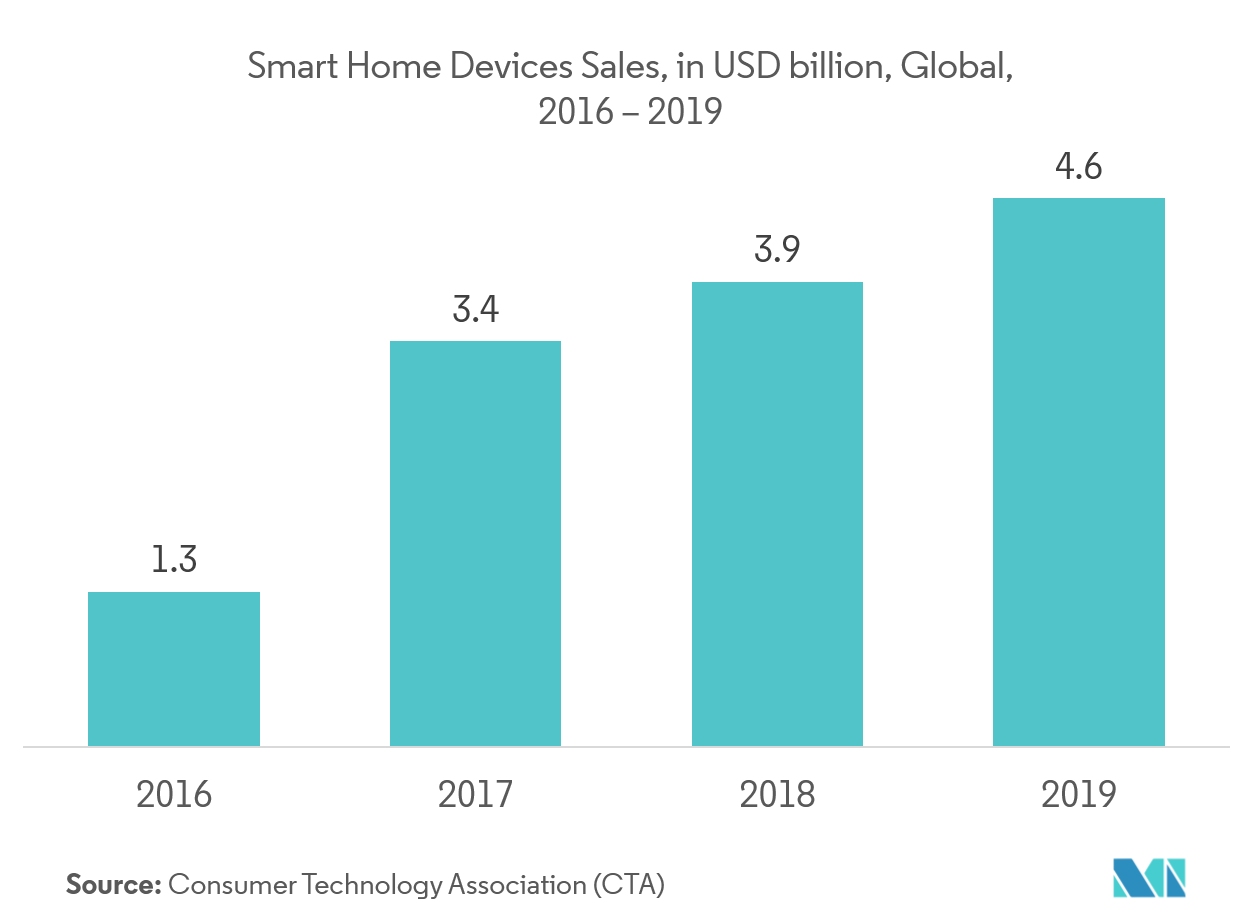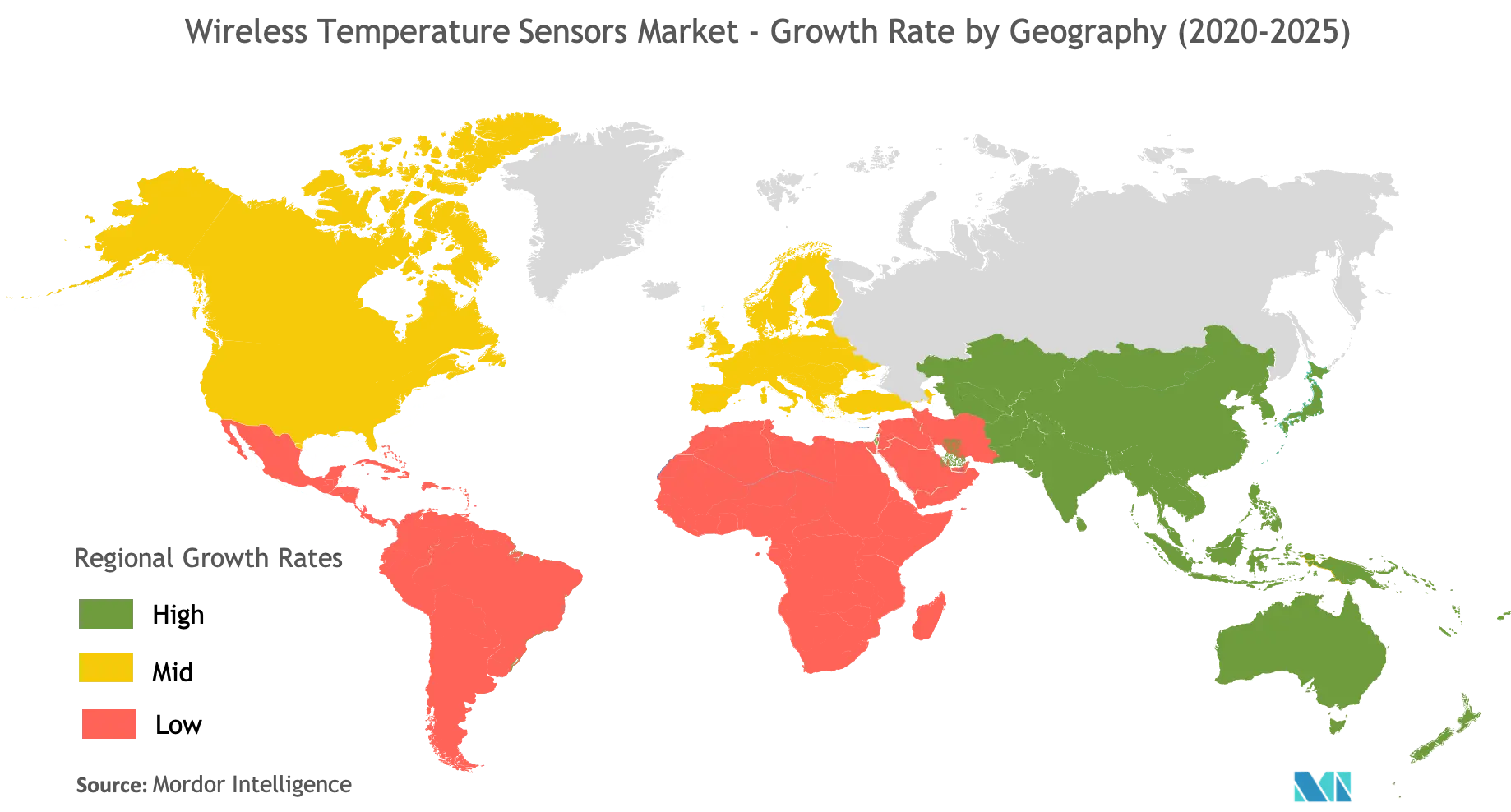Market Trends of Wireless Temperature Sensors Industry
This section covers the major market trends shaping the Wireless Temperature Sensors Market according to our research experts:
Building Automation Sector Expected to Hold Significant Share
- Sensor technology is becoming an integral part of the smart, green, and energy-efficient buildings. In building automation, many current designs can adjust for occupancy and compensate for the external conditions, such as outside air temperature.
- The integrated building solution system with wireless temperature sensors accesses control to share information and strategies to reduce energy consumption, improve energy efficiency management, and provide value-added functionality. This factor increases energy and operational efficiency and provides a level of occupant control unmatched by single- purpose and non-integrated systems.
- Globally, due to the increasing government regulations across developed and developing countries, most of the buildings need smarter heating and cooling. The wireless temperature sensors are used in smart home devices to monitor physical and environmental conditions, such as temperature, to pass the data in a structured manner through the network to the primary location. So the growth in smart home devices is directly impacting the growth of the wireless temperature sensors market.
- European standards, like PD 6662 that set standards for intruder and hold-up alarm systems (I&HAS) in buildings, are also aiding in the installation of smart solutions. In India, the penetration of the smart home is expected to increase to almost 10% by the end of 2023 from 0.8% in 2018, which includes expansion of smart home technologies, such as control, connectivity, and other smart appliances.
- Furthermore, the integration of wireless technologies into building control provides significant simplification in wiring requirements for reducing maintenance complexity and setup costs. Some of the prominent players, such as Honeywell International Inc. and Texas Instruments Inc., are developing their wireless temperature sensor module that can be easily integrated across the smart building automation systems.

North America is Expected to Hold a Major Share
- Adopting smart factories, intelligent manufacturing, and the presence of multiple industrial wireless temperature sensor manufacturers and system integrators in the different parts of North America are expected to drive growth in the market.
- In North America, the 5G adoption initiative has made it possible for temperature sensor network to transfer multimedia files at a fast rate and enable MIMO (Multiple Input Multiple Output) networking capabilities. Furthermore, avoiding wired sensors and replace them with wireless temperature sensors in commercial spaces result in reduced maintenance and increased space availability.
- For instance, In the United States, existing wireless technologies in the communication industry, such as the IEEE 802.15.4 communication protocol with reduced power consumption by continuous investment in strengthening the 5G adoption, MIMO communication, and industry 4.0 capabilities are expected to create a supportive ecosystem for the market players.
- The adoption of smart homes integrated with HVAC equipment is expected to witness rapid growth in the future, giving rise to the increased adoption of wireless temperature sensors. In various countries, like China, India, and the United States (twelve of the top 50 smart cities are located in the United States), the demand for such sensors is expected to grow.
- Additionally, the end-user industry’s readiness for the adoption of new technology in the North America region is expected to present the market vendors the potential opportunities for the growth in the wireless temperature sensors market.


